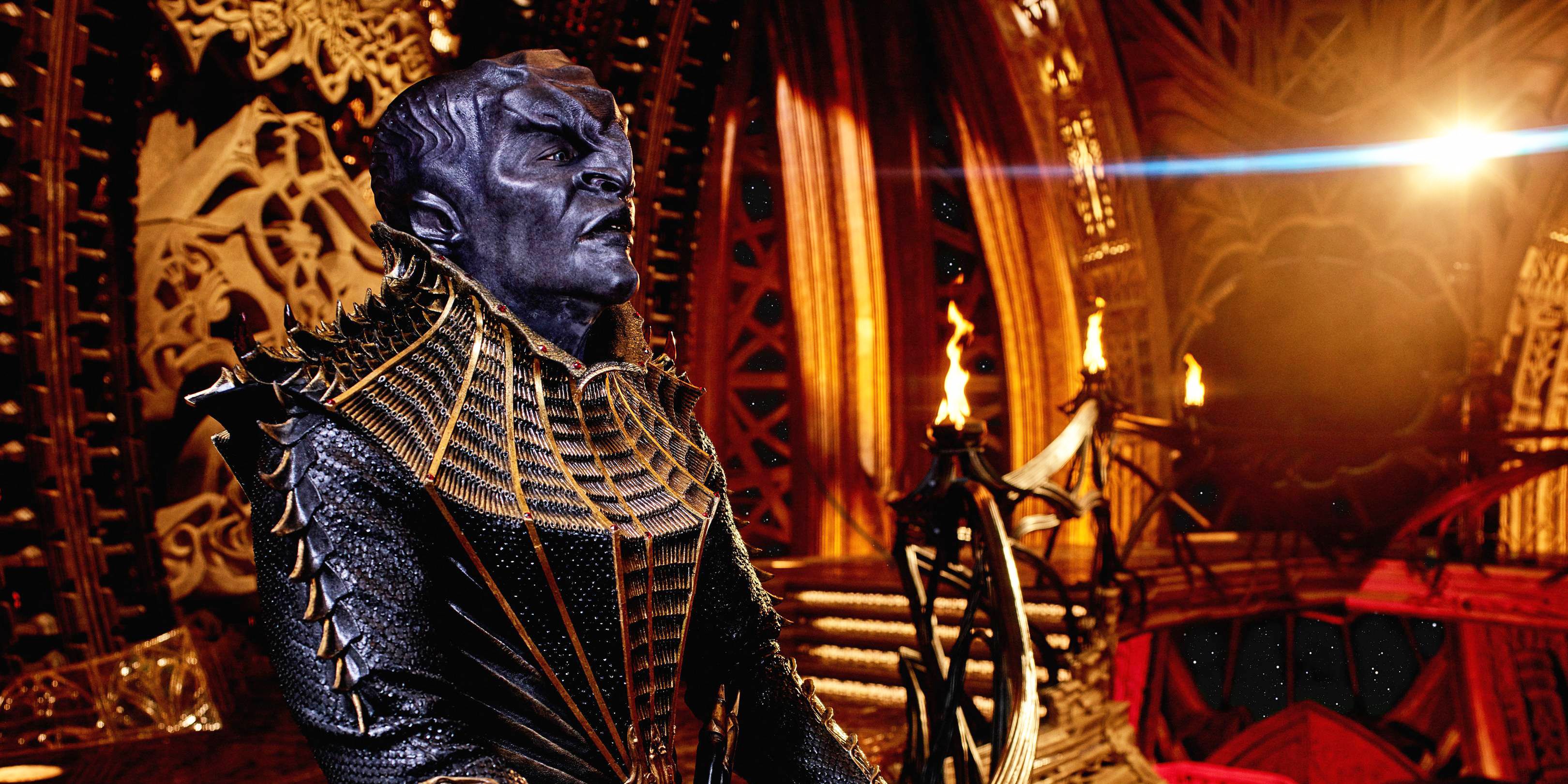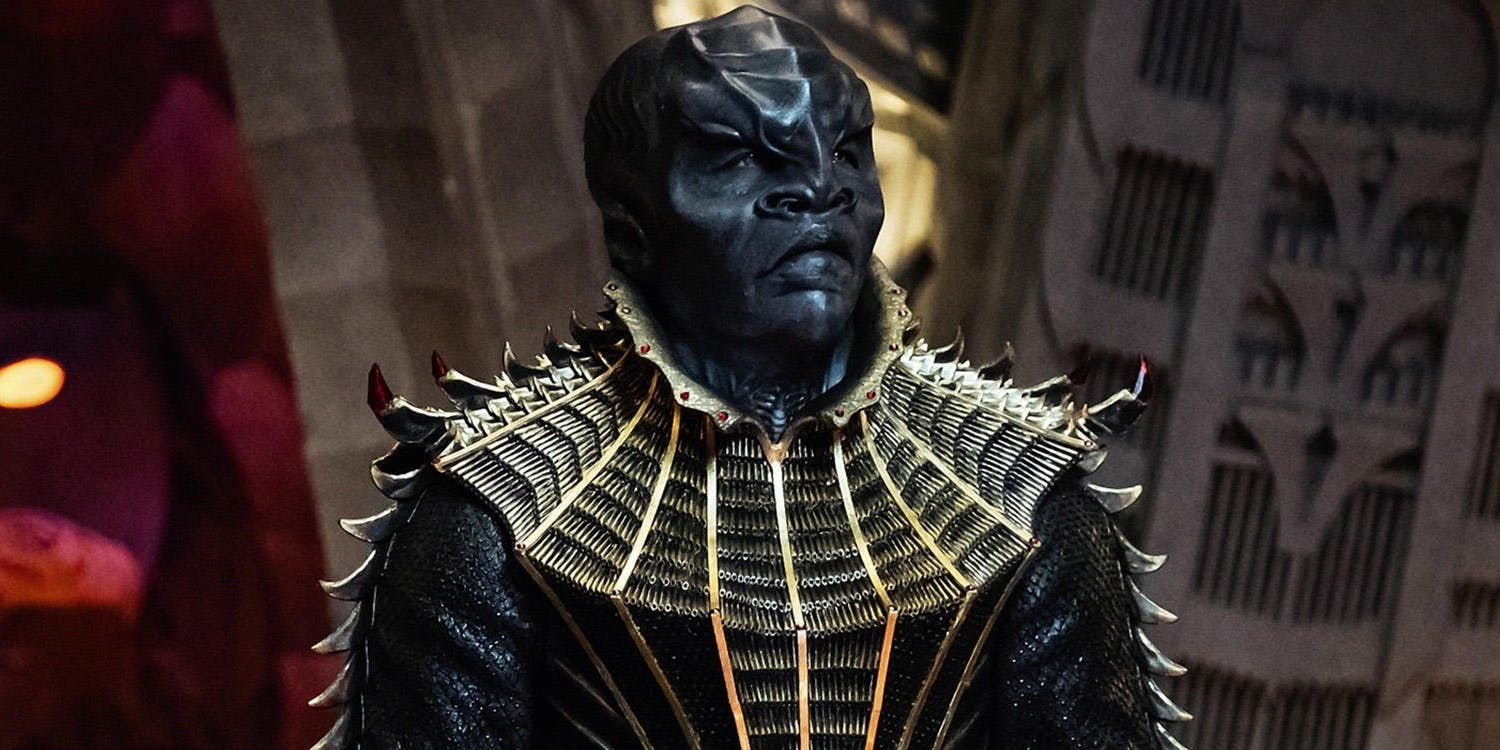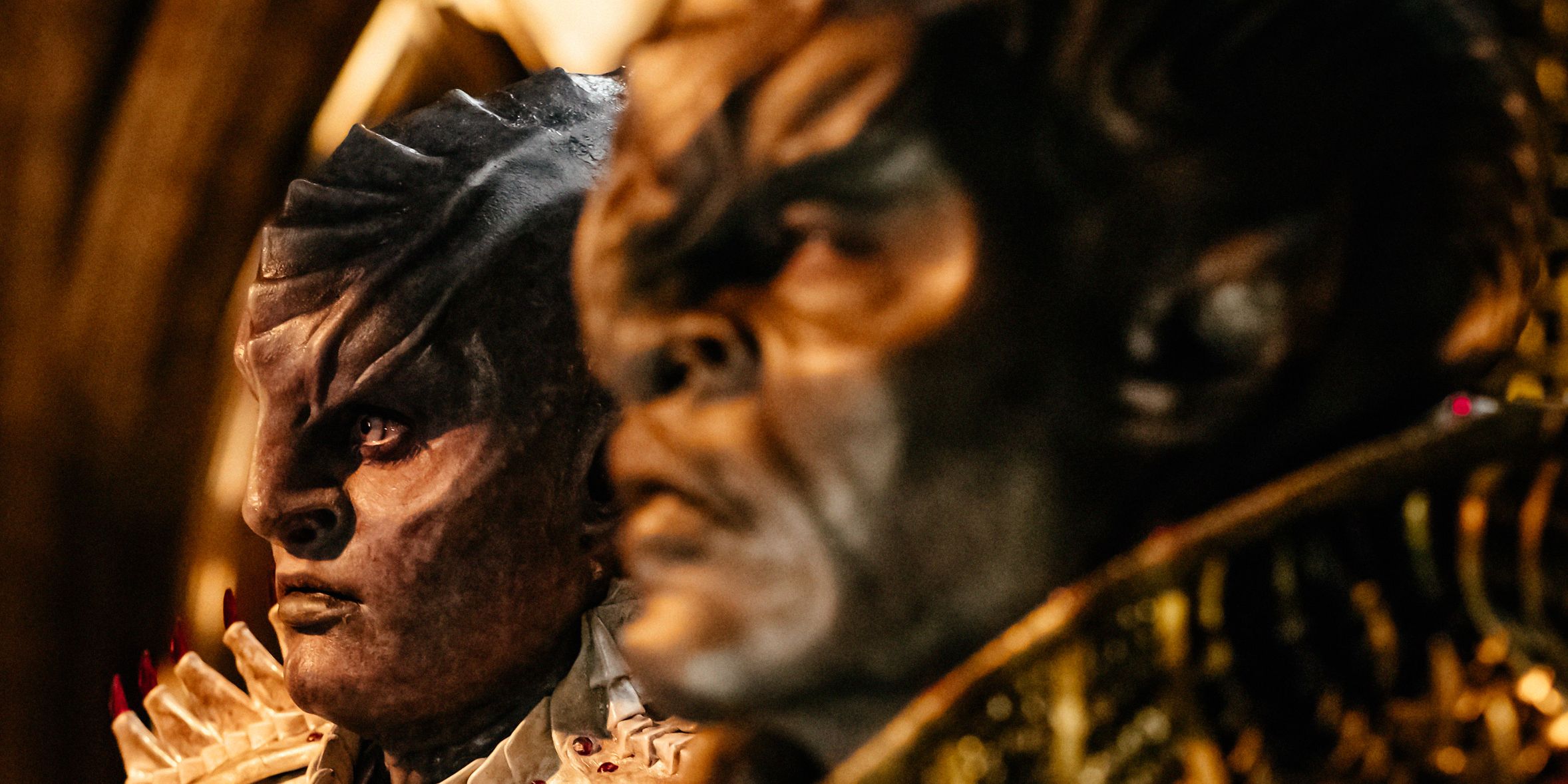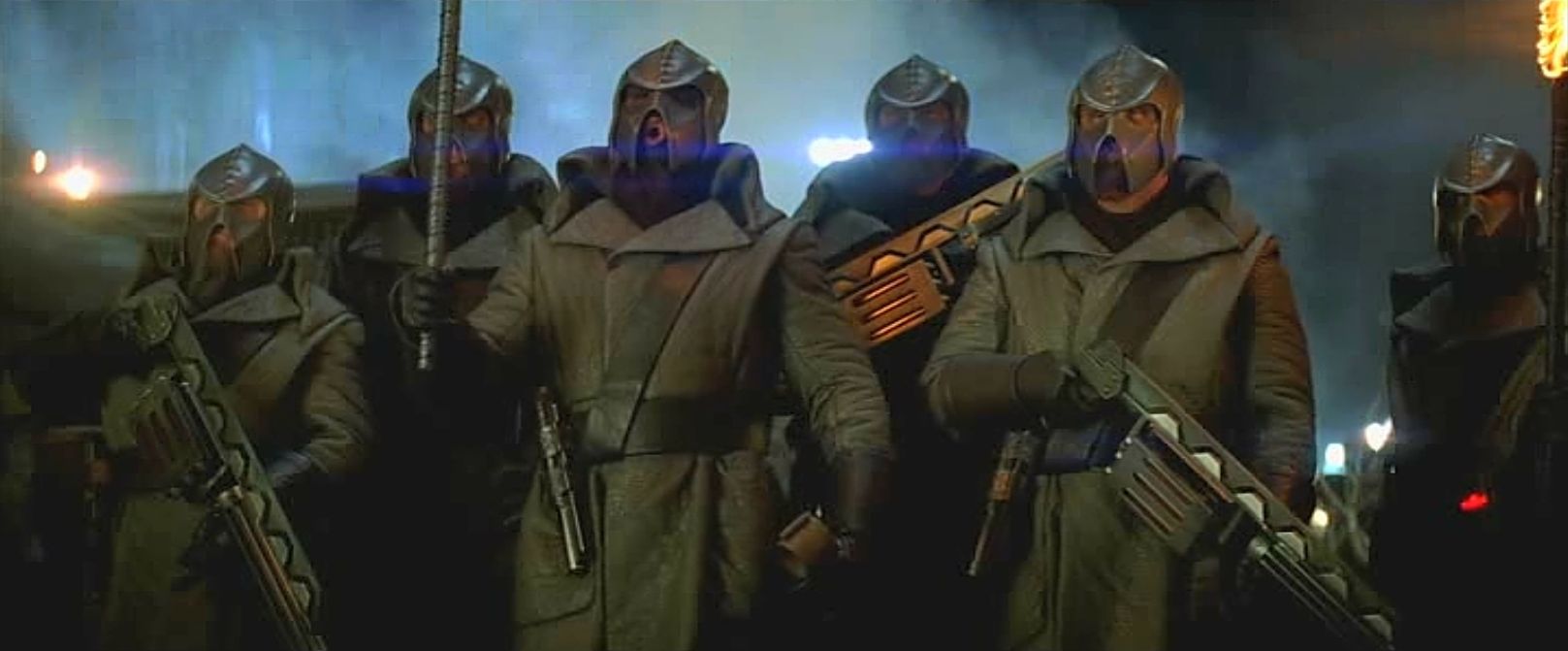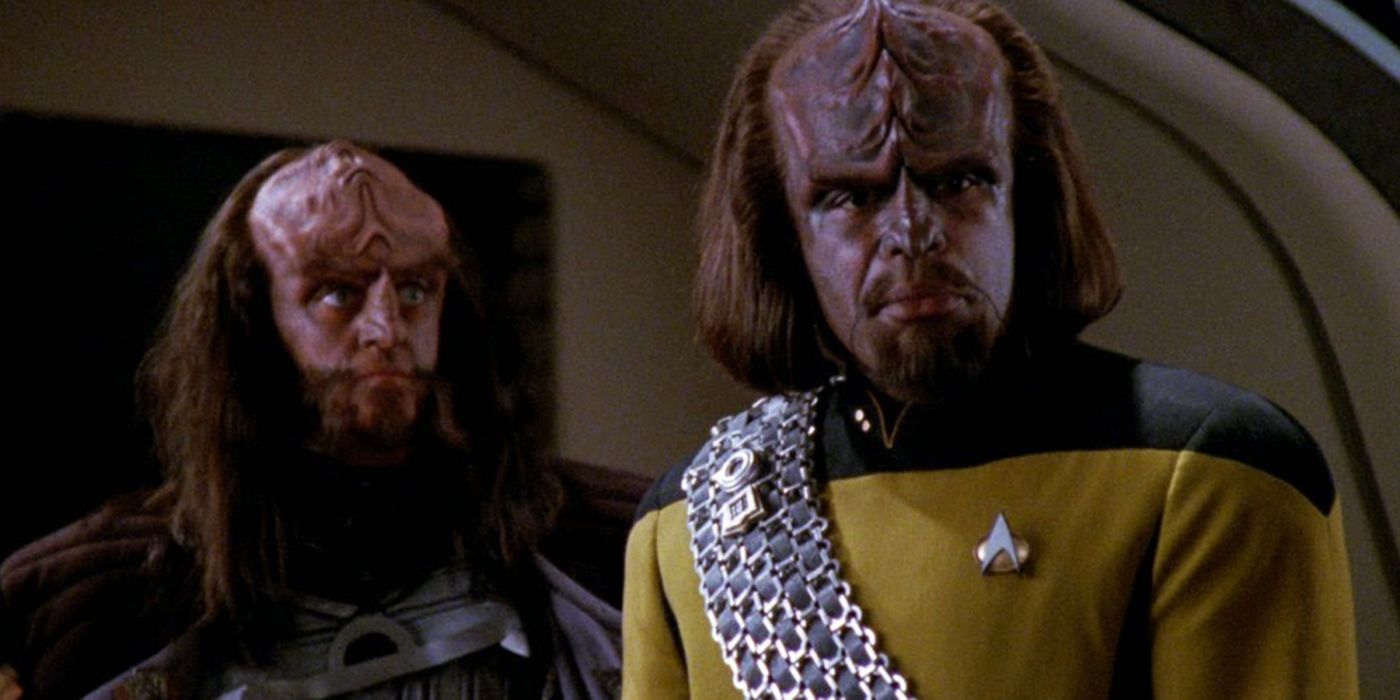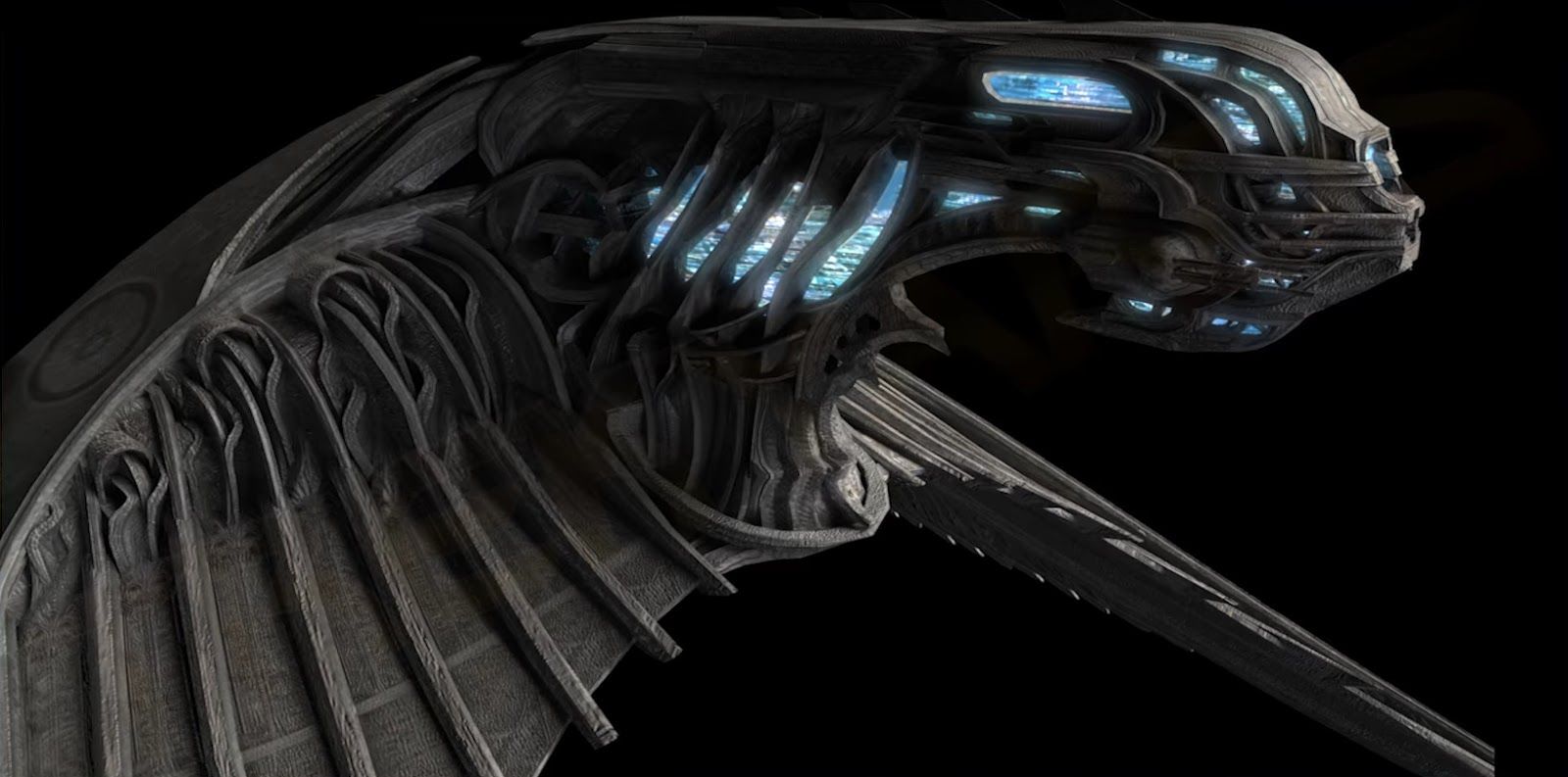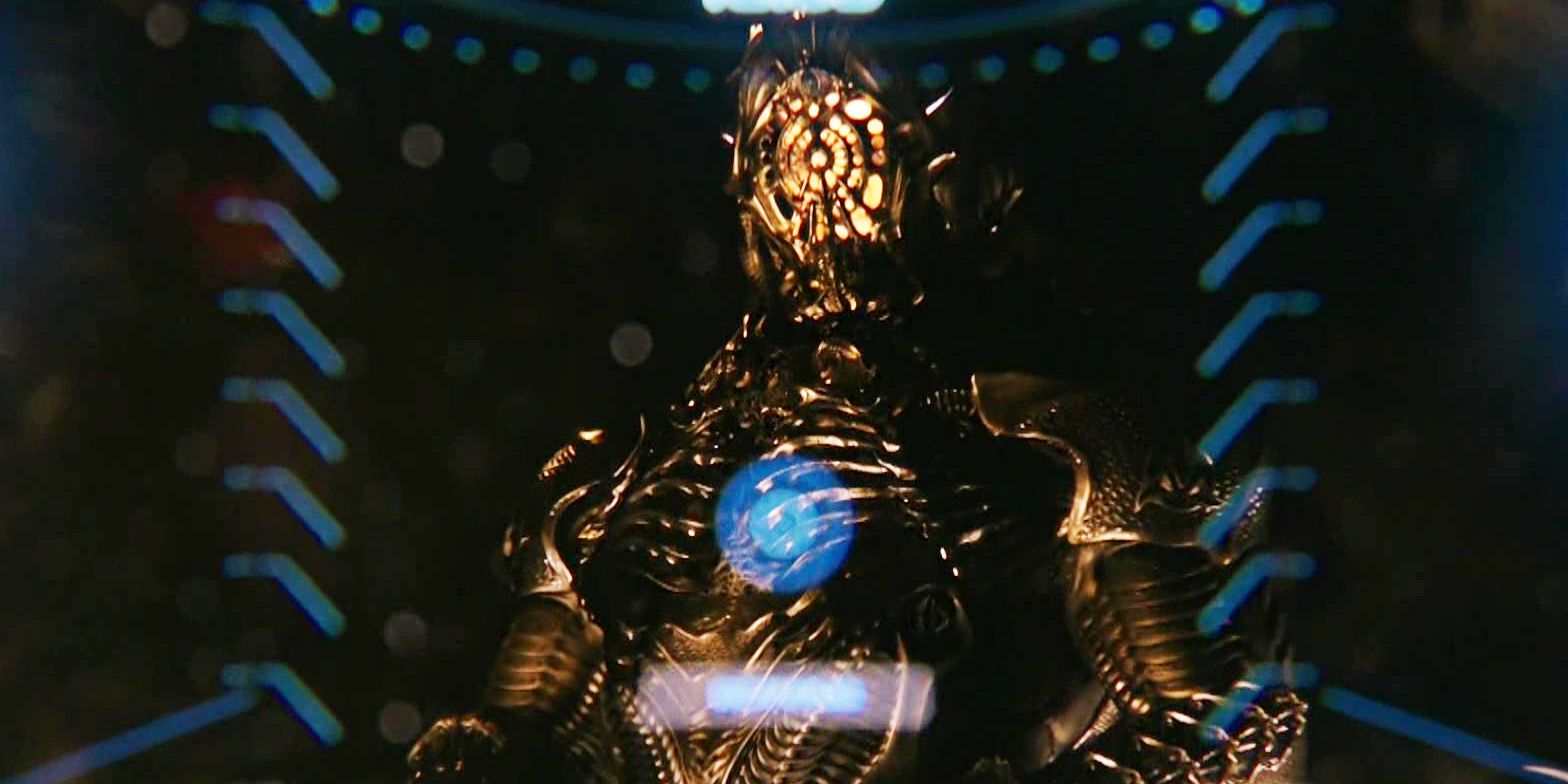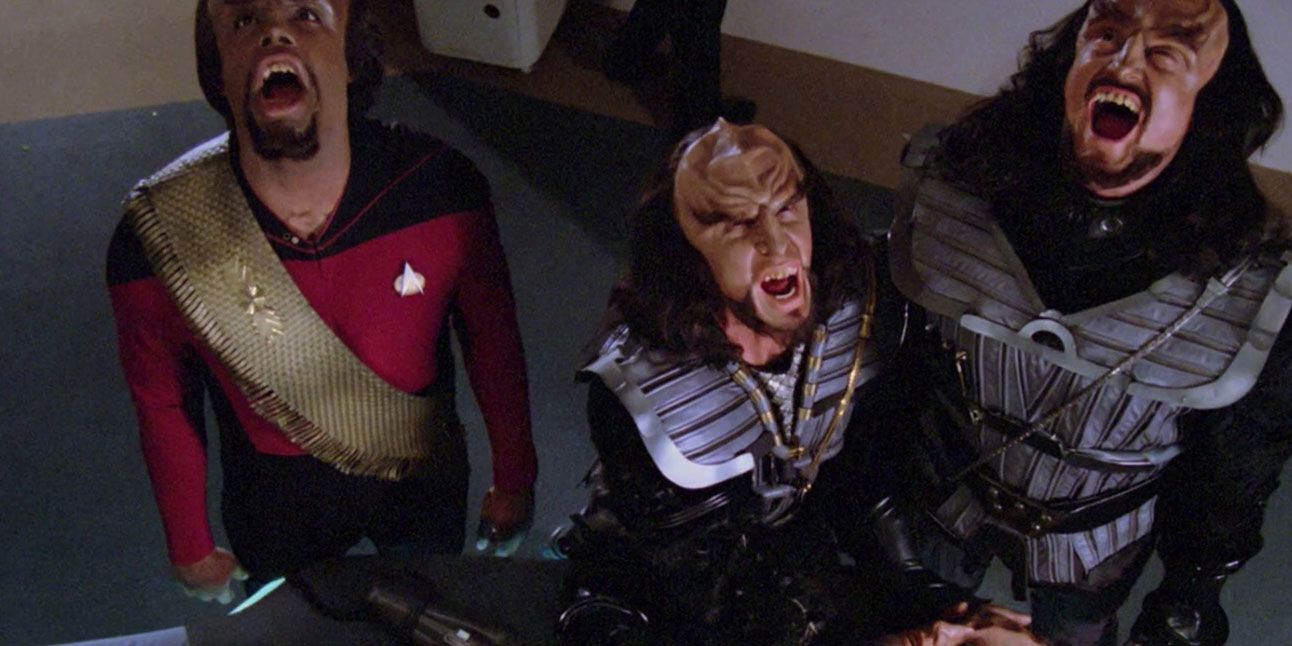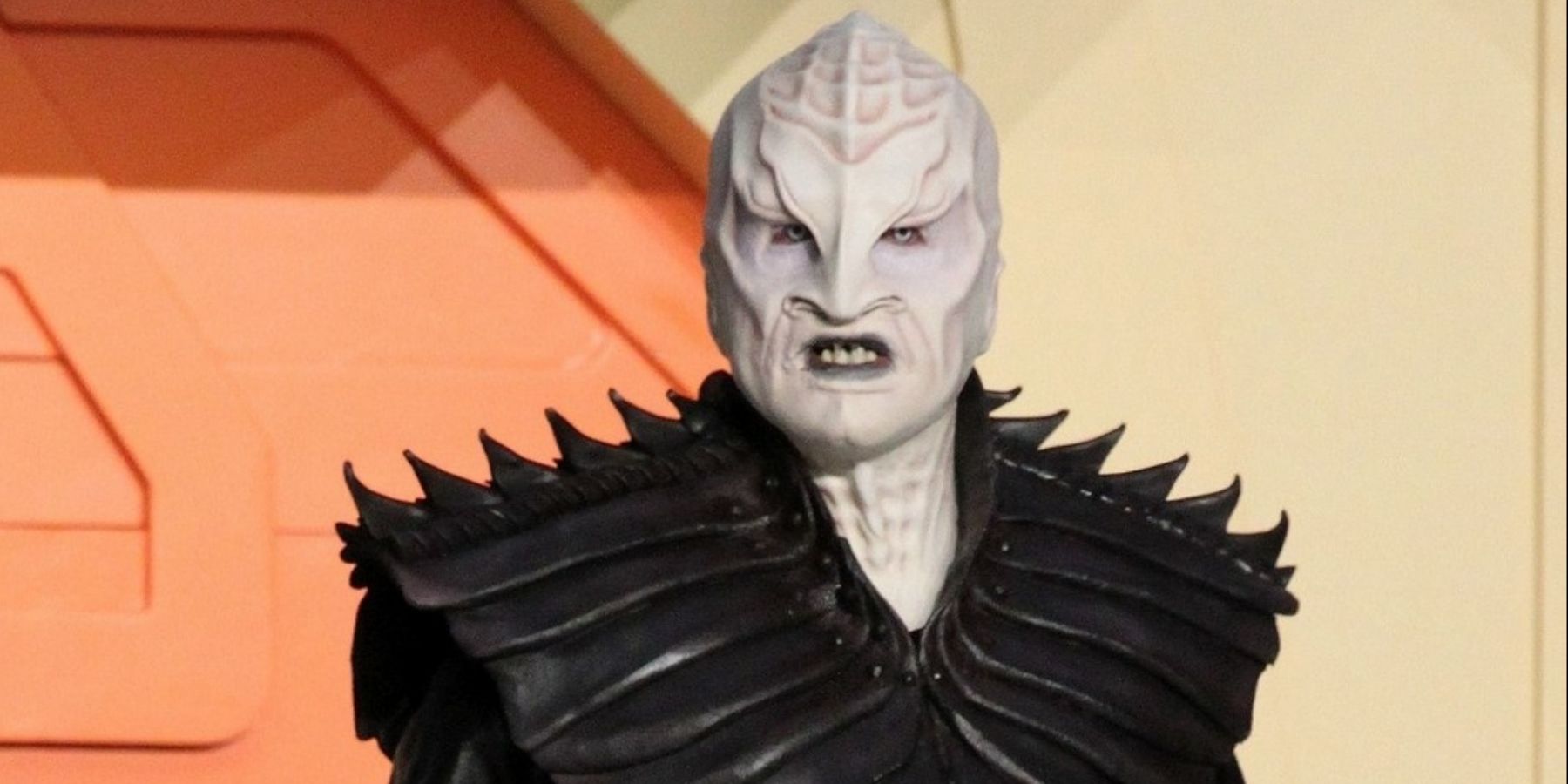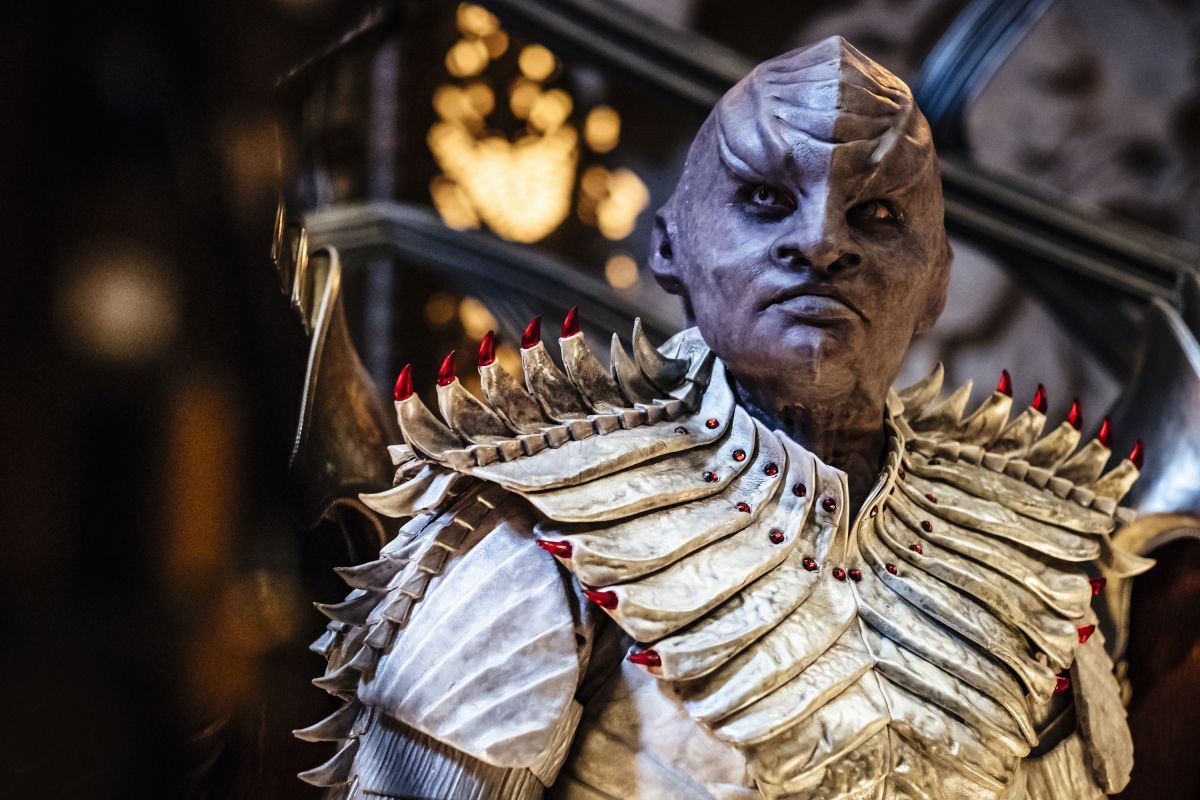One of the most hotly debated aspects of Star Trek: Discovery, by far, are its Klingons. The series takes a lot of liberties in altering this fan-favorite species. While some of the change is welcomed, others aren't. No matter what side of the fence a fan is on, though, they have to admit that seeing The Federation in conflict with the Klingons has been fascinating.
RELATED: Star Trek: Discovery Star Shoots Down Major Spock Fan Theory
After all, for most of Star Trek history the two very different groups have been in alliance instead of at war. Seeing that war in action is a welcome novelty. For some fans, though, that still isn't enough. In their honor, let's look at all the changes made to Klingons in Star Trek: Discovery.
10 FACIAL RECONSTRUCTION
In Star Trek: Discovery, the Klingons have gotten a bit of a face-lift. When they first appeared in Star Trek: The Original Series, they were just normal humans with wacky eyebrows. In Star Trek: The Next Generation they got their classic larger heads, sharper teeth, and ridged foreheads. However, Discovery has taken some liberties with their iconic look.
The series has made the brow more pronounced and their faces longer. For longtime fans, it was a surprising contrast to the Klingons they knew and loved. Mixed in with the lack of hair and differing skin tones, these Klingons look like ancient ancestors, not close relatives, of favorites like Worf and B'Elanna.
9 ATTIRE
Despite the fact the Klingons that fans saw the most were decked out in Starfleet uniforms, most all other Klingons wore traditional armor. Very angular and battle-ready, this gear made the species all the more fearsome and intimidating. Though the armor was simple, it was effective and uniform.
Years earlier, in Star Trek: Discovery, Klingon attire has a bit more of an elaborate look. Instead of ruddy blacks and browns, leaders wear opulent, brilliant golds. For all people's complaints about Star Trek: Discovery's changes, they have to admit these costumes are pretty impressive and dazzling.
8 HAIR TRADITIONS
While a bit of facial restructuring normally isn't too noticeable, Star Trek: Discovery put their changes front and center by removing the normally flowing Klingon locks from all its characters. In retrospect, the reasoning behind this was that Klingons chop off all their hair in times of war.
All this is done to honor their legendary hero Kahless, who cut off a lock of his own hair to create a great sword that aided him in liberating his people. Though fans are up in the air on if this is good reasoning or not (Klingons have been at war in other series with full heads of hair), but it at least means L'Rell and her people will have full heads of hair when it comes to Season 2.
RELATED: A Detailed Look A Season 2's New Klingon Design
7 DIMINISHED KLINGON SENSE OF HONOR
During all other portrayals of Klingons, the proud warrior race found backstabbing dishonorable. They preferred open and honest conflict over subterfuge. When the Duras deceptions were revealed, it was a deep conspiracy and surprise that the council kept it quiet. Otherwise, they were very open about their choices.
However, in Star Trek: Discovery, Klingon backstabbing is rampant. By other series' rules, L'Rell's deceptive actions would be dishonorable and reprehensible by Klingon standards, but instead, she becomes a leader. Similarly, T'Kuvma's machinations would be frowned upon and rejected, but instead he has an entire cult following. Perhaps desperate times of war call for desperate measures.
6 CHANGING GOWRON'S LEGACY
Throughout Star Trek: The Next Generation and Deep Space Nine, Gowron is the leader of the Klingon Empire. Regardless of his upstart background, he ends up being an honorable and diplomatic leader by Klingon standards. Like most great leaders of their species, his goal is to unite all the great houses in one whole, powerful empire.
In "Rightful Heir", he moves towards being the first person since Kahless to do so and the characters act like it's a huge deal that he's doing this. L'Rell's Season 1 conclusion undermines this. If she united the great houses with her threats, that means Gowron's efforts aren't special.
5 THE SHIPS
Like Romulan Warbirds and Starfleet Enterprises, Klingon Birds of Prey are fairly iconic ships. From their camo green coloring to their elongated, pronged "wings", most Star Trek fans can spot them a mile away.
However, new Star Trek: Discovery Birds of Prey look a lot more Romulan than ever before. Instead of thin prongs, the ships now have fanned wings, different coloring, and a lot less points. While they aren't completely unrecognizable, some do seem very strange. Lucky for fans, the Klingon ship they see the most is more familiar. It has those prongs, darker colors, and that hawk-like bridge but, of course, it's just extra pointy now.
4 THE TORCHBEARER
With how desperately the Klingons want to unite the empire, it'd make sense to mention the Torchbearer or Beacon of Kahless before now. However, as all know, hindsight is 20/20.
Before Star Trek: Discovery, there were no talks of beacons, ceremonial positions, or prophecies, other than the return of Kahless and the odd wackjob group (looking at you, Delta Quadrant Klingons). At best, Klingon spirituality was fierce, but mostly focused on battle and honor. There were less mysterious prophecies and endless religious roles and more a soulful connection to their history and pride. Perhaps the Klingons just lost some of their religious practices the closer they grew to The Federation.
3 DIFFERING DEATH RITUALS
When it comes down to the meat of Klingon Death Rituals, what fans see in The Next Generation and Discovery are fairly similar. After losing a member of their people, someone looks deep into the deceased's eyes to ensure their soul is sent to Stovokor, their version of heaven. For the squeamish, such an intimate ritual can be quite intimidating.
Here's where things differ, though. In TNG's death ritual, Worf and two other warriors then let out a loud battle cry to honor the deceased. Afterwards, the body is disposed. In Star Trek: Discovery, there are more human means of memorial coffins. While there's a fair argument to be made that the rituals can differ just because of different subsets of Klingon, it's still a big departure from TNG's precedence.
2 WILD SKIN COLORS
Between all of the previous Star Trek series, Klingons have very traditionally had dark skin tones. While Voq's wildly different skin tone can be excused by his albino-ism, the shades of purple, pitch black, gray, beige, brown, and a motley mix of the colors is a startlingly new feature.
While the previous shows had some variance, particularly with half-Klingons, they never were this varied. Most all pure-blood members of the species were a warm brown, with some tonal difference. The skin tone range only adds to the gap between Discovery's Klingons and the ones the populate all "future" Star Trek series.
1 L'RELL'S THREATS WORKING
At the end of Star Trek: Discovery Season 1, L'Rell is given the detonator for a giant bomb on Qo'noS, the Klingon home planet, and threatens to let it blow if her people don't follow her. While it is an impressive finale, a way to bond the Discovery crew and new leadership, and one bold power move, it wouldn't work with the Klingons fans knew.
Most all other portrayals of Klingons suggest they'd choose death over submission, so it's likely the houses wouldn't have caved to L'Rell's demands. Instead, they would have let her blow things up and then destroy her for doing so. From the human perspective, of course giving in sounds like a better idea. But these aren't humans. Though it sounds brutal, not many Klingons ever preferred surrender.

